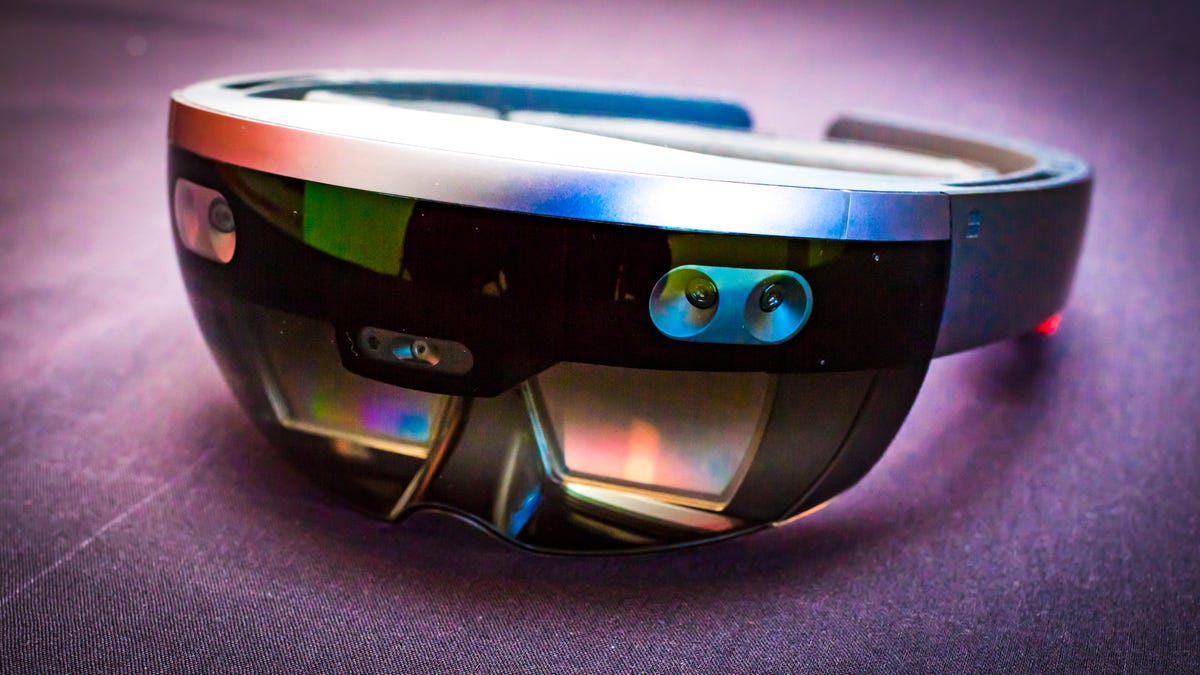Why Microsoft can't say when its incredible HoloLens will become a reality
Before it sets a price or release date, Microsoft needs to see what this visor is truly capable of.

Kudo Tsunoda's job is to dream. And dreams don't always become reality right away.
Specifically, the Microsoft executive's job is to dream up all the reasons people might want computer-generated objects to coexist with the real world. He's part of the team behind Microsoft's HoloLens, a marvel of technology that allows the wearer to see virtual animals hop up on furniture or have part of their office appear to be the surface of Mars.
My favorite: building castles with Minecraft blocks that "stay" wherever I put them.
Today, Microsoft is shipping the first completed version of its HoloLens headset to developers around the world, developers who paid $3,000 a pop for the privilege of being the first to work on applications for the technology. It's a sizable sum -- twice the $1,500 that Google originally charged for its doomed Glass headgear -- yet far less than the tens of thousands that major game developers have spent for early access to unannounced video game consoles.
It needs to cost less, because nobody -- not even Microsoft, it seems -- knows when a consumer version of the HoloLens will actually hit shelves, or what it will be like when it gets there. Developers don't want to risk a lot of money.
While Microsoft insists that there will be a consumer version -- eventually -- they've repeatedly warned the public not to expect it anytime soon.
There's a reason for that, though. Tsunoda doesn't dream alone.
Through the HoloLens.
As he explained to me in an interview ahead of Microsoft's Build developer conference, he doesn't design the hardware. He doesn't develop the software. His job is between -- serving as an intermediary between those developing HoloLens experiences, and Microsoft's own HoloLens hardware and software teams. The reason that Microsoft is shipping a "developer edition" of the headset now is because Microsoft doesn't know what the final HoloLens should even be.
"We want to optimize and push the hardware and the software to a place that is best going to enable developers," Tsunoda said.
And Microsoft doesn't plan to release HoloLens, he said, until Microsoft and its army of developers have dreamt quite a few dreams. "What we really want to make sure we do, well before the consumer version comes out, is to have the full breadth of holographic experiences available for consumers to try."
One idea I hadn't heard before. Tsunoda describes how he'd like to place holograms all around his house to remind him of the things he'd like to do when he wakes up. Instead of flat sticky notes, he imagines having holographic reminders. A empty milk carton hovering in front of his fridge, perhaps. Reminders that exist in real space, for people whose spacial memory trumps their recall. Like me.
It might not be a bad idea to wait until a lot of these dreams become a reality before promising too much, too soon. We saw what happened to Google Glass when early adopters were allowed to purchase an early headset. And if HoloLens' strategy seems familiar, that's because it's almost exactly like that of virtual-reality pioneer Oculus.
The Oculus Rift VR headset shipped two different developer kits and went through several very public prototype iterations before Oculus (and owner Facebook) decided it was ready for market, and even then it didn't quite live up to all the hype when it was released to consumers earlier this week. With Oculus, there's still a gap between the dream and the reality. Perhaps they should have waited a few months more.
And for HoloLens, the reality is currently a very long ways from the dream. We'll show you just how far a little later this week.

